雲海家常菜: Hot and Sour Dumpling Soup
plus an update on that whole David Chang chili crunch trademark debacle
This is Yun Hai Taiwan Stories, a newsletter about Taiwanese food and culture by Lisa Cheng Smith 鄭衍莉, founder of Yun Hai. If you aren’t yet a subscriber, sign up here.
This month we revisit what some may think of as an old topic: chili crisp. I maintain that this ingredient is an age-old, traditional, and irrefutable part of Chinese diasporic food, not a hype category running its course through the hot-blooded American specialty food engine. As such, it’s important it becomes as ubiquitous as ketchup. To that end, we have an encouraging update from the David Chang chili crunch trademark drama that we all almost forgot about.
On the subject of chili crisp, I also share one of my go-to recipes utilizing Su Chili Crisp , our very first product (and perhaps still the most beloved). It’s an easy, elegant recipe that transforms your frozen dumplings into a bowl of hot and sour dumpling soup. Give it a spin.
In April of this year, Momofuku sent cease and desists to small minority-owned businesses making chili crunches and crisps, asking them to suspend their use of the term “chili crunch” and “chile crunch” within 90 days.
Quick backstory: Momofuku had purchased the trademark for “chile crunch” in 2023 from Chile Colonial LLC, a company making a salsa macha inspired product. Then, in March of 2024, Momofuku doubled down and applied to trademark the alternate spelling “chili crunch.” They deemed both phrases as proprietary to them, and insisted it was their legal responsibility to protect them.
This was very upsetting to us at Yun Hai. I posted a Late Night Lament™ to IG that outlined my feelings. To paraphrase: Chinese-language generic names for chili oils with crispy sediment sometimes include the word cui 脆, which can be translated as “crunchy” or “crispy." Xiang la cui 香辣脆 is the term used by Lao Gan Ma and Chuannan, two different chili crisp brands.
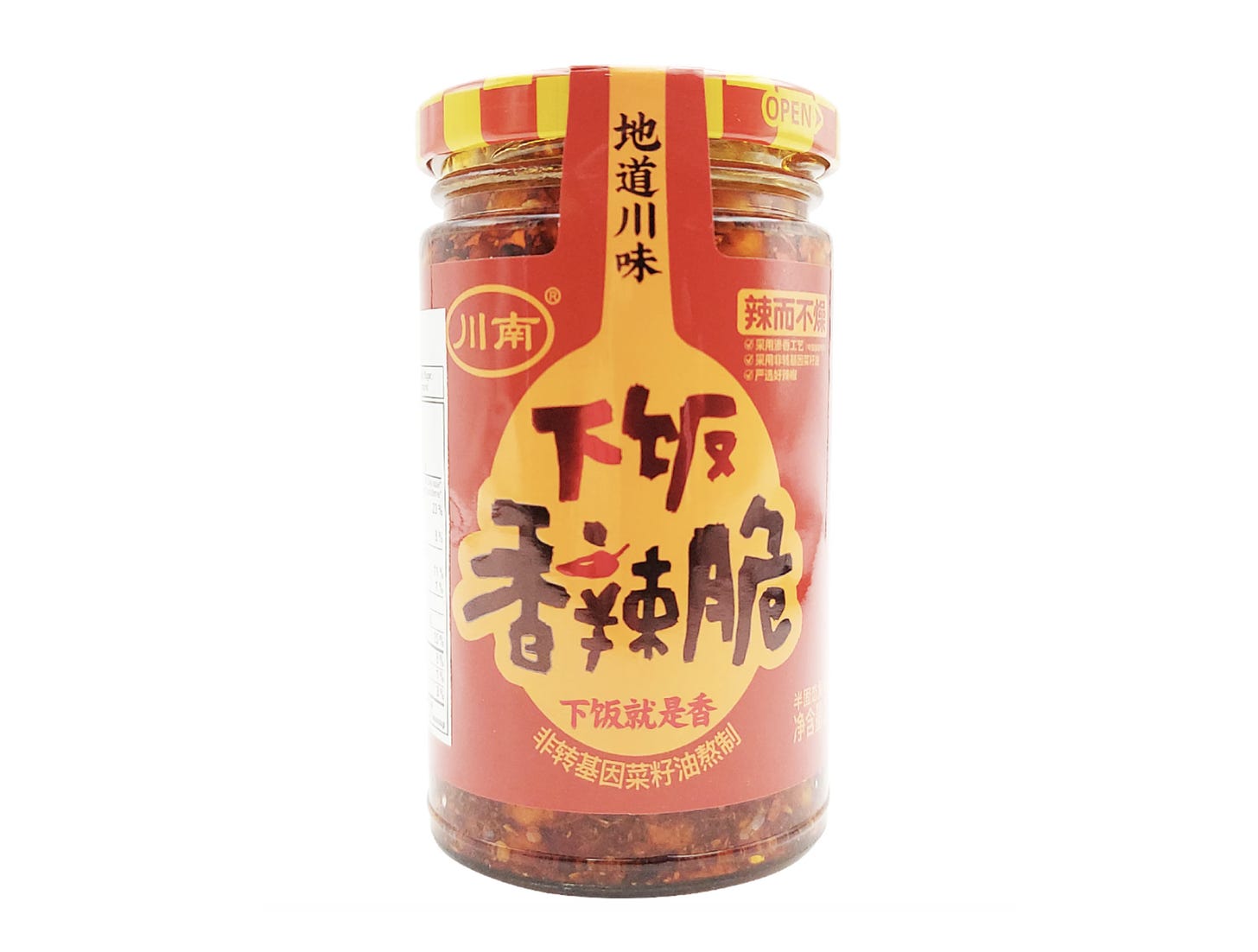
Given that Asian foods already have a difficult time being translated uniformly, seeking exclusive rights over a commonly used phrase derived from a generic term in another language was not only unethical, but would set back the progress this typical condiment has made in defining a category for itself in the United States. You can’t trademark “barbecue sauce,” so don’t trademark “chili crunch.” I felt the USPTO should reject the application, and I said so on social media.
Many others said so too, and the internet exploded with anger at Momofuku. After the PR wildfire, Chang publicly apologized on his podcast and said that Momofuku wouldn’t enforce the trademark, but surmised it would still be better for them to hold on to it than to fall into other hands.
As transcribed from The Dave Chang Show:
Marguerite Mariscal, CEO of Momofuku: "If we were to let the trademark go, the term chili crunch can be claimed tomorrow by anyone... more likely another company w/ the resources and the desire to actually litigate everyone who's using the mark currently. So that would be us, chili crunch with an "e," and everyone else in the space using the world."
David Chang: "... how I started to understand what was happening and our options at play was fellowship of the ring with Bilbo and what do you do with the ring that you can't destroy and you gotta get rid of it and you wanna just bury it so no one can get to it... Once we understood the power of this thing... it was like, oh, we gotta get rid of it... But we can't give it away and we can't destroy it... There were a couple other options. Number one, I was like, well, then let's just share it. We'll all wear this fucking ring together... Let's just give it to everybody and we'll carry this stupid trademark together."
Mariscal: "... that is something that's not allowed by the USPTO."
Chang: "How I interpret it, in Tolkien speak, there's no way to destroy it... So we just gotta hide this fucking thing and that's what we gotta do... And I don't want this to be seen as being inactive or being apathetic to this situation, or us trying to have monopolistic powers or anything like that. Our activity here, our choice, is to do nothing... no enforcement, no policing of this trademark."
Shortly after Chang’s apology, trademark filings show that Momofuku continued to pursue the registration of the mark.
Is Momofuku Bilbo here, or Sauron? Further reading of Tolkien (find me with Miéville, though) reveals the true message: power corrupts and is difficult to destroy. The ring should never be forged in the first place. Case in point: Momofuku’s registration motivated Fly by Jing to reapply for their previously denied trademark for sichuan chili crisp, to “defend [them]selves against a larger power.”
Thankfully, Fly by Jing withdrew their application shortly after filing, citing public awareness as providing enough security for them.

Magically, on September 13th, over 6 months after the controversy, Momofuku withdrew their application, too. Did MomoIP LLC finally come to its good senses? A Letter of Protest was filed by a concerned party and was accepted into the application file in July—perhaps that tipped the scale? Momofuku should make a statement; something on the record from them might help future-proof against subsequent filers.
I’m writing about it now because I think it’s important that business owners and consumers be aware of how trademark law can be used inappropriately, to scare off small and independent businesses. Public awareness made a difference, and will continue to.
And now for a recipe.
Chili Crisp for Cooking
One of my favorite things about Su, the Taiwanese brand of chili crisp that we stock, is how lightly seasoned it is. It’s a chili crisp for the chef. Keep it on the table, but also use it to quick-start chili oil-based dishes, like Mapo Tofu or Red Oil Wontons. It can be added minimally or in spades, without significantly altering the overall saltiness or sweetness of a dish. Su’s subtlety transforms what it’s paired with, never dominating.
The original flavour was the Mala Su Chili Crisp, a recipe developed by producer Chen Yu Chao 陳宇超's family, who had migrated from Szechuan to Taiwan after the Chinese civil war. They perfected the recipe while living in military villages in the 1930s, trying to recreate a taste of home for their community.
It’s still the only chili crisp I’ve tried with notable numbing power, and is perfect for the Szechuan-inspired dishes. But today I’m using our lesser known gluten-free Cilantro flavor, which has a more delicate profile. Its ingredients are soy bean oil, dried chao tian jiao peppers, onion, cilantro, garlic, sesame seeds, black pepper, and salt. The combination is herbal, a little peppery, not numbing, with a mild-medium level of spice. I think it’s perfect for understated and delicate foods like steamed fish or congee.
Here, I’m using it to make one of my favorite ten-minute dishes: Hot and Sour Dumpling Soup 酸湯水餃.
The process is dead simple: while you boil frozen dumplings, put a mix of delicious oils, seasonings, and ferments into the bottom of a soup bowl. Then, lay the cooked dumplings into the bowl, ladle the dumpling cooking water on top, and garnish. The whole thing turns into a rich and spicy soup that will warm you right through.
I think the herbal notes of the cilantro crisp pair really well with the sweet-sour taste of the Taiwanese black vinegar, especially when combined with the liberal use of fresh cilantro. If you don’t like cilantro, omit the fresh stuff but give the chili crisp a try. Even those with the anti-cilantro gene enjoy it. It takes on more of a coriander character.
Recipe: Hot and Sour Dumpling Soup 酸湯水餃
Have you ever drunk dumpling sauce right out of the sauce dish because it’s that good? This recipe is basically that, but (a little) more polished. Turn a handful of frozen dumplings into a spicy, sour, and aesthetically striking dish with pantry items you have on hand. It’s a format: don’t omit the vinegar, soy sauce, sesame oil, or chili oil, but the rest is up to you.
Prep Time: 5 minutes
Cook Time: 10 minutes
Serves 2 (scale as needed)
Ingredients
12 frozen dumplings, store bought or homemade
Soup Ingredients
4 tbsp of Wu Yin Black Vinegar
2 tbsp of Yu Ding Xing Firewood Soy Sauce
1 tbsp of Dong He White Sesame Oil
2 tbsp of Su Chili Crisp, Cilantro
1/2 tsp Zhou Nan Frost Salt
1/4 tsp white pepper
1/4 tsp sugar
2 tsp rendered chicken fat (or schmaltz)
2 tsp toasted white sesame seeds
Garnish
a handful of chopped cilantro
a palmful of chopped scallion
Instructions
Bring water to a boil.
In the meantime, lay out one good sized bowl per serving. Evenly divide the vinegar, soy sauce, sesame oil, su chili crisp, salt, white pepper, sugar, schmaltz (optional), and sesame seeds between the bowls.
Cook the dumplings according to package instructions (if using premade). Add dumplings to boiling water, stir to prevent sticking, cover and bring to a boil, then add 1/4 to 1/2 cup of cold water and bring to a boil again, uncovered.
When the dumplings are done (floating at the top of the water), put 6 into each serving bowl.
Ladle two scoops of dumpling water (about 1 cup) into each bowl.
Top with cilantro and scallion and serve.
Stir before eating and adjust seasoning to taste.
Tips and Tricks
There’s no shame in frozen dumplings! Look for a short-ish ingredients list (MSG ok, obv), which might indicate better quality.
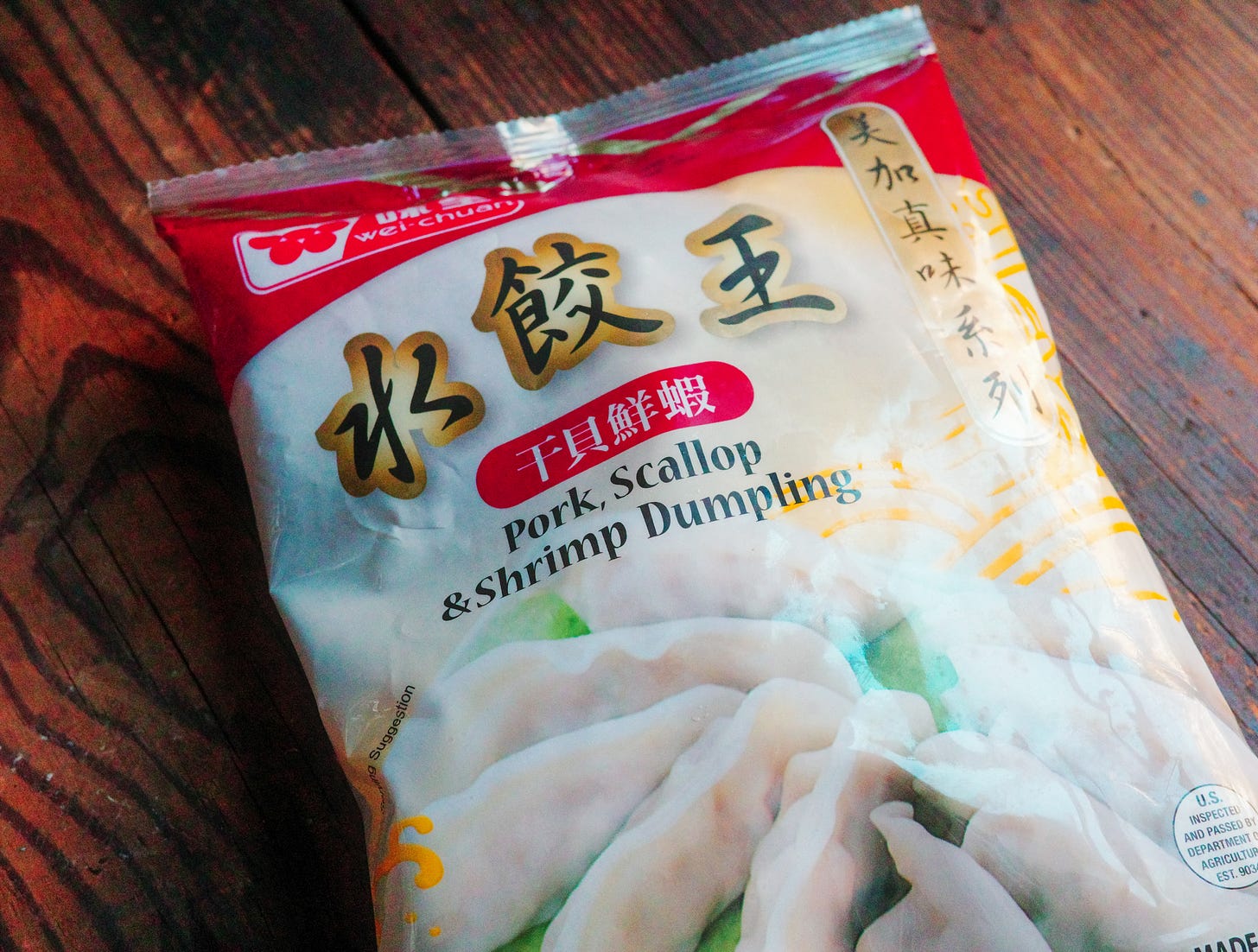
To flavor the stock, I love to add chicken fat into the bowl. Goose and poultry fat is in common use in Taiwanese cooking; schmaltz is a readily rendered version in the kosher section of many grocery stores. Alternatively, you could use lard or five-spice beef tallow leftover from making Beef Noodle Soup, too. Try shirodashi, concentrated Japanese soup base (which comes in many vegetarian versions and often features aged daikon).
To add vegetables, layer in a few baby spinach leaves or delicate lettuces before ladling in the water. Or toss some dried high mountain cabbage in to cook with the dumplings, and add that into the serving bowl.
Remind your guests to give it a mix before eating. The ingredients bloom immediately, but a good stir will bring the intensity up from the bottom.
Reintroducing Su Chili Crisp
Honestly, we almost never talk about Su Chili Crisps because they more often than not sell out on their own. But in case you don’t know, these exquisite crisps are small-batched in Taipei from a traditional recipe that's three-generations old. It was our first product (I had been hauling cases back on the airplane for four years) and one of the reasons I founded Yun Hai (so I could stop hauling them). It’s still one of my favorite products in our lineup.
We carry three kinds of Su Chili Crisp—mala, five spice, and cilantro. Check out the collection to read more about each flavor, and what we use them for.
Further Reading
So much has been written about chili crisp in recent years, it’s mind numbing (har har). Here are a few of our favorite references for further reading on this traditional ingredient and its hype trajectory.
History of Chili Crisp by Xueci Cheng
How Chili Crisp Took Over America by Allison Arnold
The Cult of the Chili Crisp is Real by Cathy Erway
And one of the first newsletters I ever wrote was a devotion to chili crisp pluralism (and also happens to have what I can only describe as a winning Mapo Tofu recipe).
While I’m at it, don’t miss this really cool video featuring 100 hours of Taiwanese Street Food posted by doobydobap, featuring a surprise cameo of our friends George and Laurent at the very end.
what food u got,
Lisa Cheng Smith 鄭衍莉
Thanks to Rich Shih of Flavor Freaks and Michelle Tew of Homiah for following the thread on the chile crunch trademark status even after the dust had settled, Suzann Moskowitz of The Moskowitz Firm and Stacy Wu of Cast Legal Studio for providing a trademark law advice, pro bono.
Written with editorial support by Amalissa Uytingco, Jasmine Huang, and Lillian Lin. If you enjoyed this newsletter, please share it with friends and subscribe if you haven’t already. I email once a month, sometimes more, sometimes less. For more Taiwanese food, head to yunhai.shop, follow us on instagram and twitter, or view the newsletter archives.



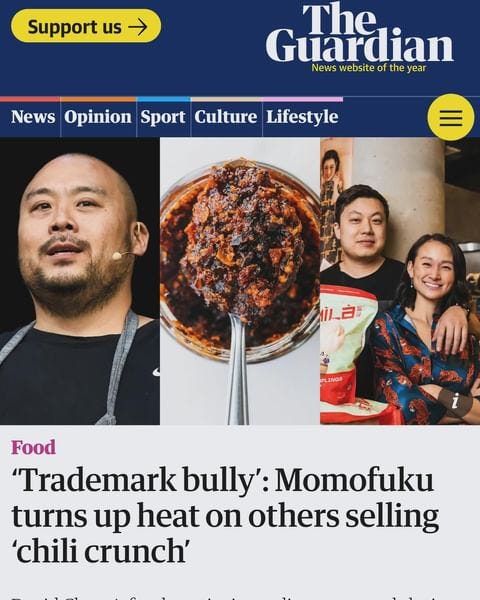
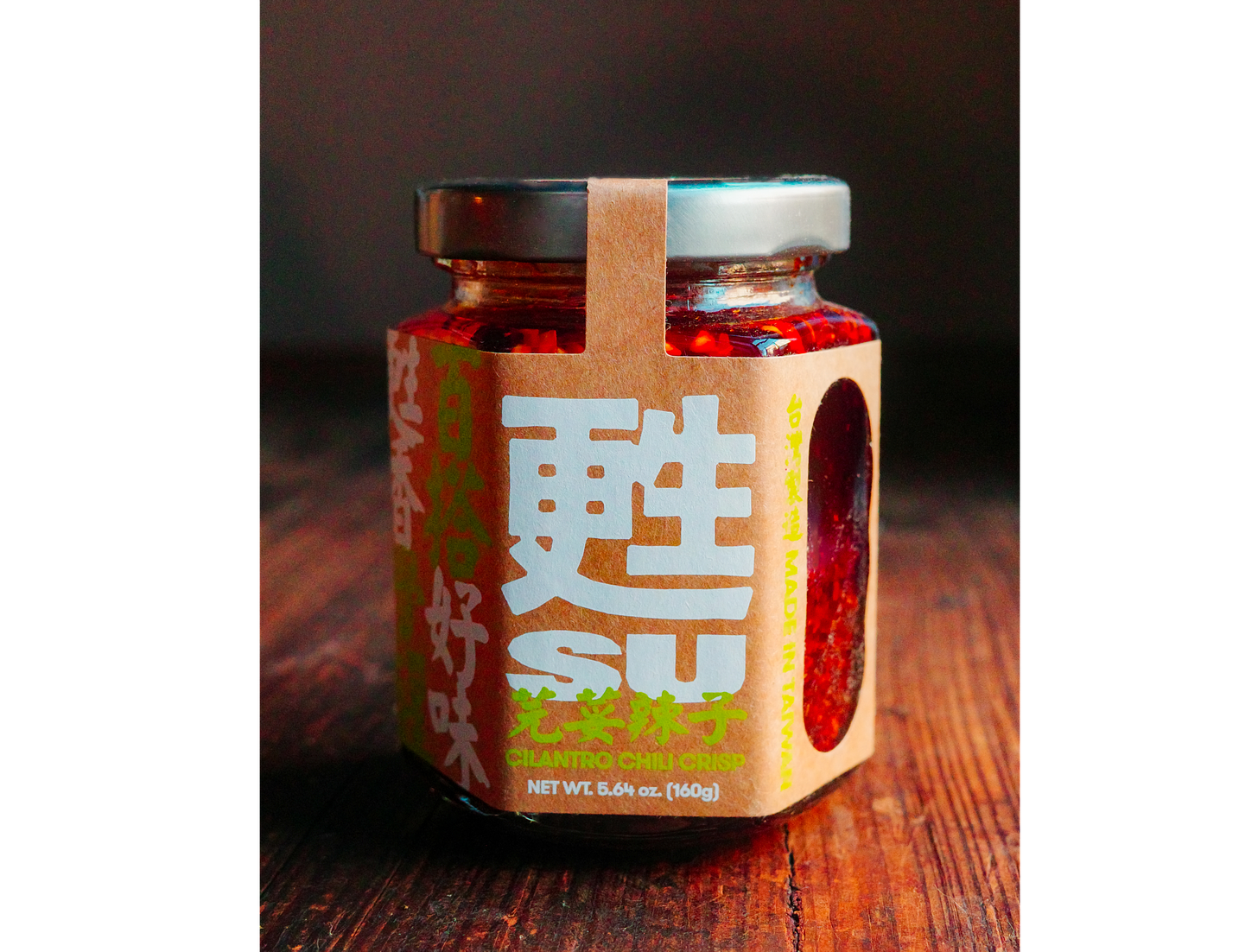
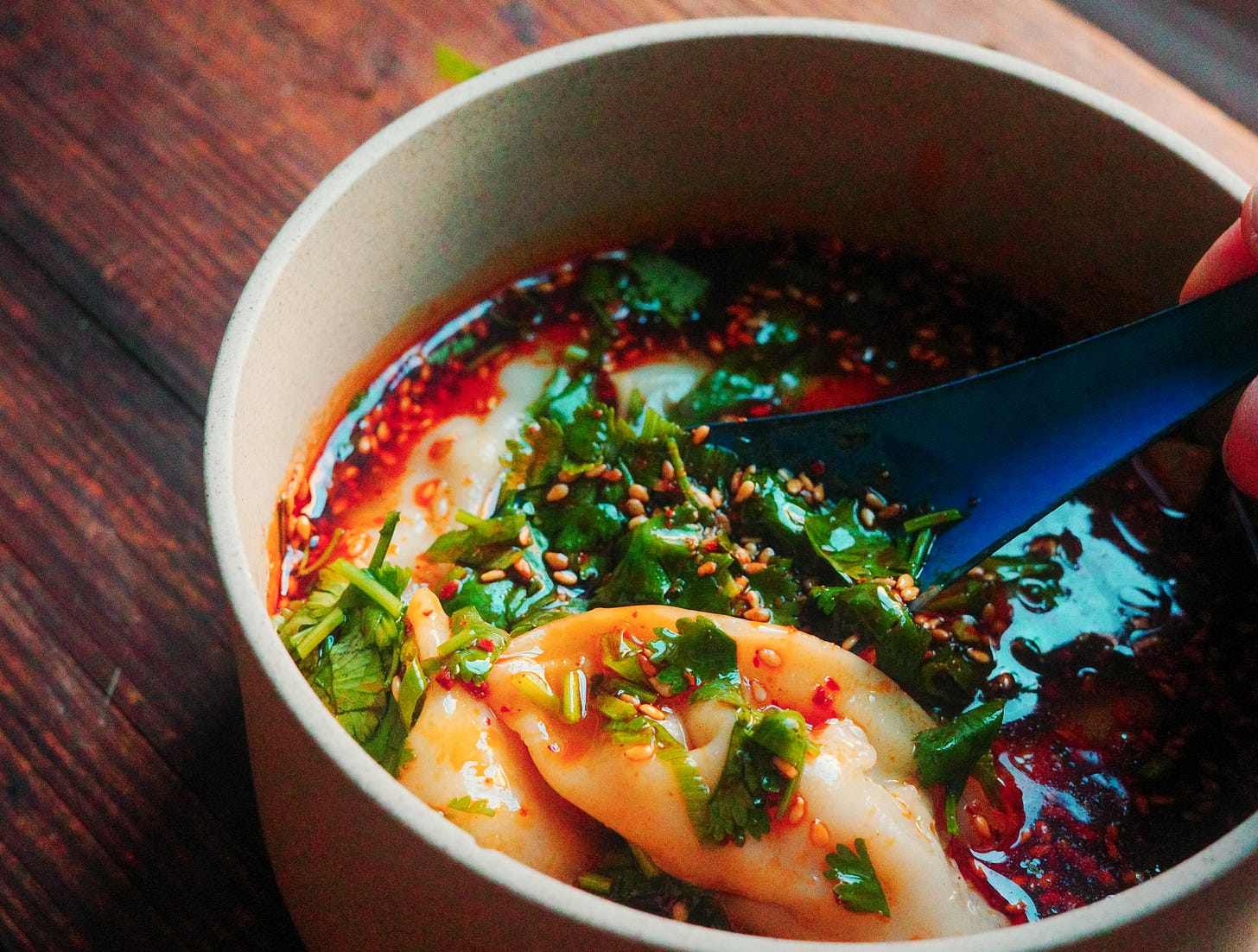
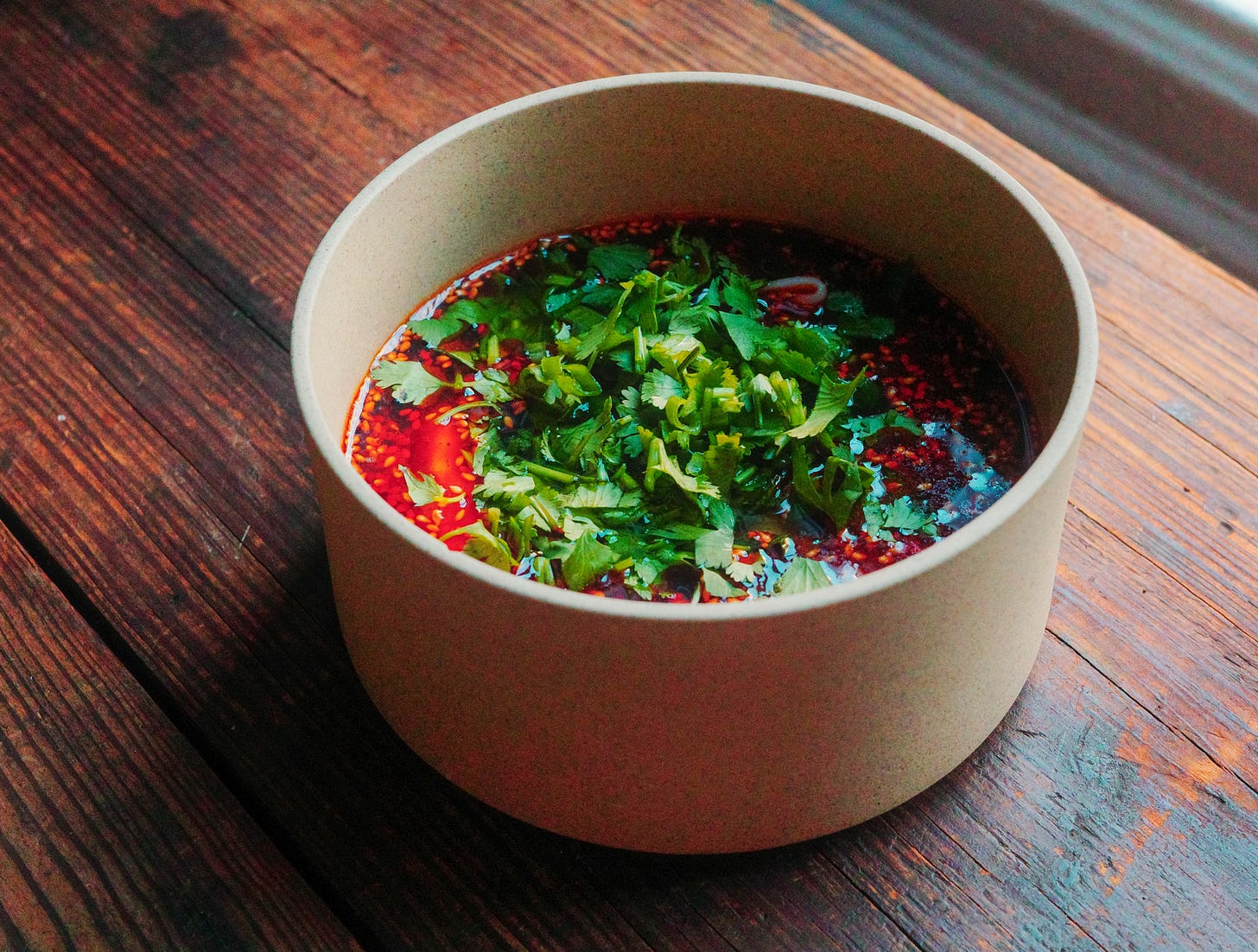
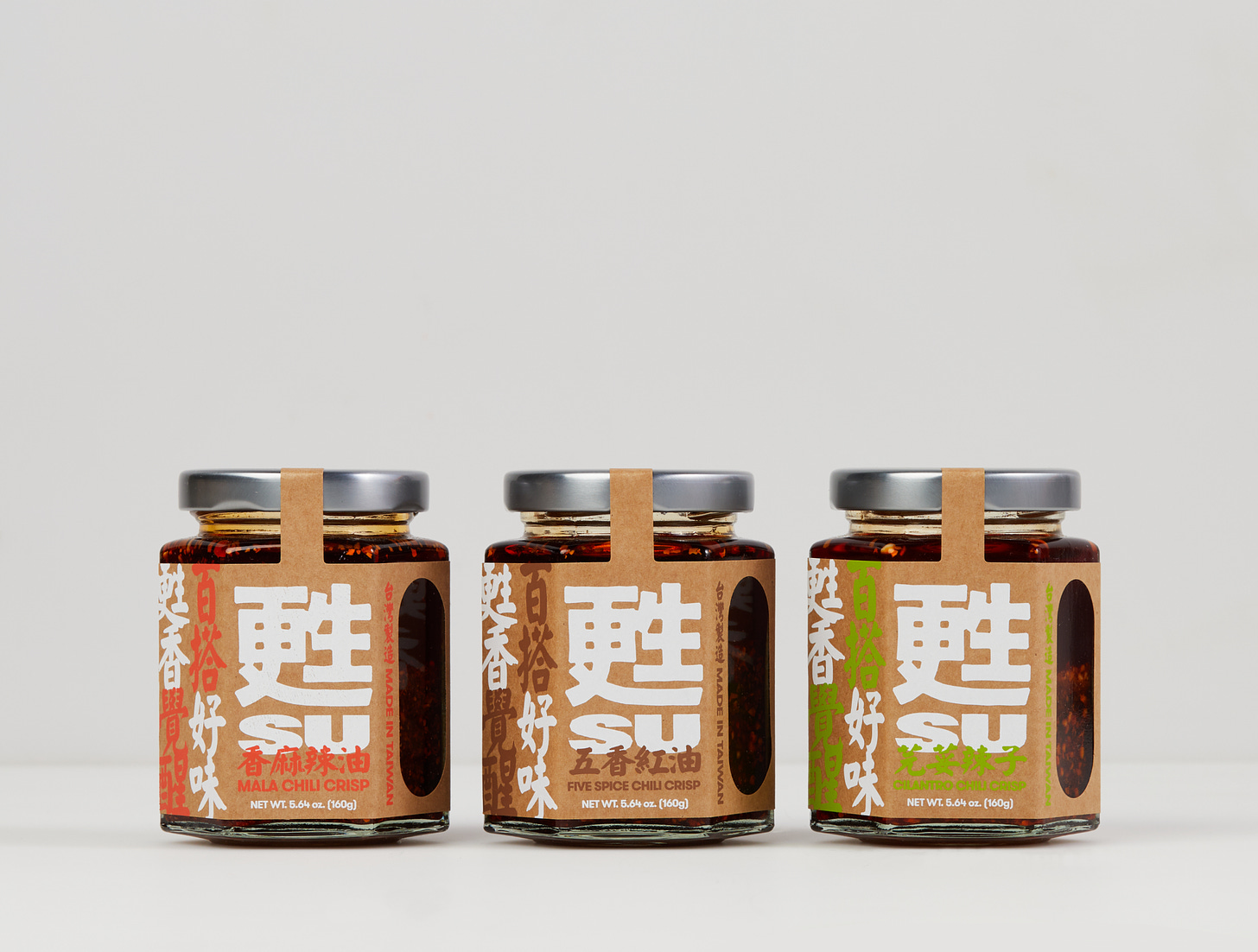


I had originally included a fuller excerpt from the David Chang podcast that might help contextualize his comments a little more. The "ring" is the trademark in his metaphor, not the product:
Here's the full excerpt:
Marguerite Mariscal, CEO of Momofuku: "If we were to let the trademark go, the term chili crunch can be claimed tomorrow by anyone... more likely another company w/ the resources and the desire to actually litigate everyone who's using the mark currently. So that would be us, chili crunch with an "e," and everyone else in the space using the world."
David Chang: "... how I started to understand what was happening and our options at play was fellowship of the ring with Bilbo and what do you do with the ring that you can't destroy and you gotta get rid of it and you wanna just bury it so no one can get to it... Once we understood the power of this thing... it was like, oh, we gotta get rid of it... But we can't give it away and we can't destroy it... There were a couple other options. Number one, I was like, well, then let's just share it. We'll all wear this fucking ring together... Let's just give it to everybody and we'll carry this stupid trademark together."
Mariscal: "... that is something that's not allowed by the USPTO."
Chang: "How I interpret it, in Tolkien speak, there's no way to destroy it... So we just gotta hide this fucking thing and that's what we gotta do... And I don't want this to be seen as being inactive or being apathetic to this situation, or us trying to have monopolistic powers or anything like that. Our activity here, our choice, is to do nothing... no enforcement, no policing of this trademark."
I'm a sucker for hilariously mistranslated subtitles. Where can I find more of those LoTR screenshots? And do you remember this blogpost from 20 years ago? https://web.archive.org/web/20170126021932/http://winterson.com/2005/06/episode-iii-backstroke-of-west.html